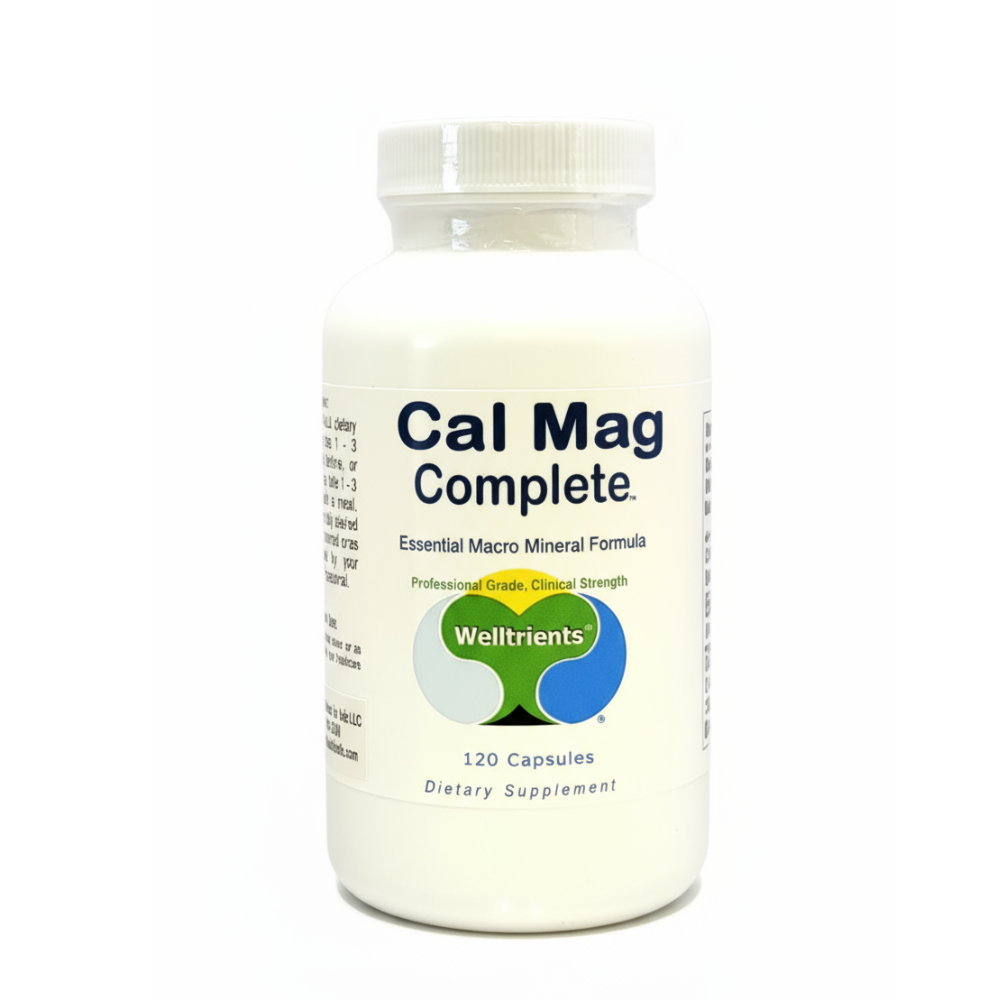







Frequently Asked Questions about Cal Mag Complete
How Does Cal Mag Complete Work?
Ingredients For Cal Mag Complete
| Supplement Facts | ||
|---|---|---|
| Ingredients in 1 Capsule: | ||
| Calcium Mineral Complex (CMC) | 350 mg | |
| Calcium (Coral carbonate) | 120 mg | 12% |
| Magnesium (Glycinate Chelate, MA) | 80 mg | 20% |
| Methylsulfonyl Methane (MSM) | 40 mg | * |
| Potassium (Potassium citrate) | 40 mg | 1% |
| Vitamin C Complex (from AP & MA) | 27 mg | 45% |
| Magnesium Ascorbate (MA) | 12 mg | * |
| Ascorbyl Palmitate (AP) | 15 mg | * |
| Zinc (Monomethionine) | 1 mg | 7% |
| Boron (Amino Acid Chelate) | 1 mg | * |
| Copper (Glycinate Chelate) | 0.1 mg | 5% |
| Vitamin D3 (Cholecalciferol, 50 mcg) | 1,000 IU | 250% |
| Vitamin K-2 (Menaquinone-7) | 20 µg | 25% |
| Strontium (Citrate) | 3 mg | * |
| Manganese (Glycinate) | 1 mg | 50% |
| Molybdenum (Amino Acid Chelate) | 3 µg | 4% |
| *Daily Value not established | ||
Cal Mag Complete Comparison
| Feature | Cal-Mag Complete | Generic Calcium-Magnesium Supplement | Magnesium-Only Supplement |
|---|---|---|---|
| Calcium Content | 1000mg (highly bioavailable forms) | Varies (often less bioavailable) | None |
| Magnesium Content | 500mg (multiple forms for optimal absorption) | Varies (often single form) | Varies (often single form) |
| Vitamin D3 | Yes | Sometimes | Rarely |
| Vitamin K2 | Yes | Rarely | No |
| Boron | Yes | Rarely | No |
| Trace Minerals | Yes | Sometimes | Rarely |
| Optimal Ca:Mg Ratio | Yes (2:1) | Varies | N/A |
| Allergen-Free | Yes | Varies | Varies |
Why Would You Use Cal Mag Complete
Directions for Use For Cal Mag Complete
About Colloids For Life
|
Colloids for Life LLC
Natural Supplements and Vitamins for Optimum Health
Colloids for Life LLC is dedicated to health and wellness, including offering top quality, natural supplements and encouraging a healthy lifestyle that includes good nutrition and exercise. For a variety of useful health tips as well as the latest health news, subscribe to our newsletter, sign up for our blog feed, like us on Facebook and/or follow us on Twitter.
Location Colloids for Life is located at: 7100 Broadway Bldg 2RS Denver CO 80221 |











